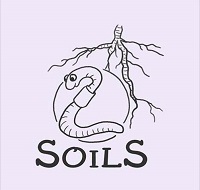1 Research priorities
The authors of this course, all members of the Open University’s School of Environment, Earth and Ecosystem Sciences (EEES), routinely bid for funding for research. Through a recent project, called Mitti Matters, they have been exploring research priorities for a future project (Holliman et al., forthcoming).
In the following activity, you will have an opportunity to prioritise which research area you would like to see the authors bid for next.
Activity 1
Read the information below about six possible research topics, each of which involves a study of floodplain meadows.
When you have read about the six topics, please access the short survey from the link below.
| Option 1: Soil carbon dynamics |  |
Should OU researchers investigate the relationship between land-use, soil structure and soil carbon, allowing us to assess how effective meadows are at storing carbon in the long-term, thereby helping to limit climate change? |
| Option 2: Soil structure |  |
Should Open University researchers run trials and collect evidence to demonstrate methods for re-structuring damaged floodplain soils to improve their health and their water-storage capacity, thereby reducing flood risk? |
| Option 3: Grassland management for pollinators |  |
Should Open University researchers run grassland management trials to show how to increase the frequency of nectar-bearing species and to extend the flowering season, to support pollinators, thereby benefiting both food production and biodiversity? |
| Option 4: Restoring meadows |  |
Should Open University researchers assess floodplains in terms of the habitats they could support, and methods for restoring diverse habitats, with the aim of benefiting a range of ecosystem services? |
| Option 5: Our meadows |  |
Should Open University researchers investigate how people interact with meadows and identify how this connects with aesthetics and well-being? |
| Option 6: Pollution mitigation |  |
Should Open University researchers explore the effects of nutrient availability on biodiversity to identify mechanisms to reduce the impact of excessive nutrient availability (such as from sewage discharges and soil erosion)? |
Access the following link to add to the survey: survey link [Tip: hold Ctrl and click a link to open it in a new tab. (Hide tip)] (open in a new tab or window).
Discussion
Open University researchers ran a similar research prioritisation exercise with community groups, practitioners working in environmental management, teachers and A-level students. When they combined the findings from these groups, their number 1 research priority was carbon storage.
